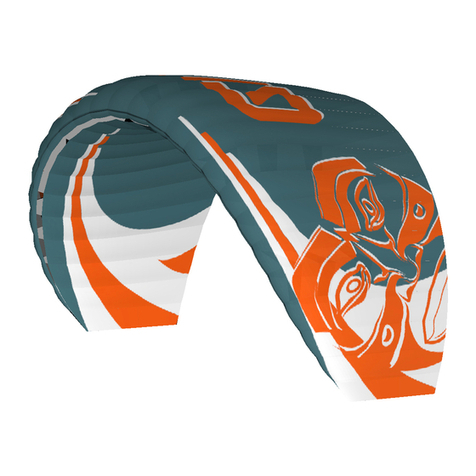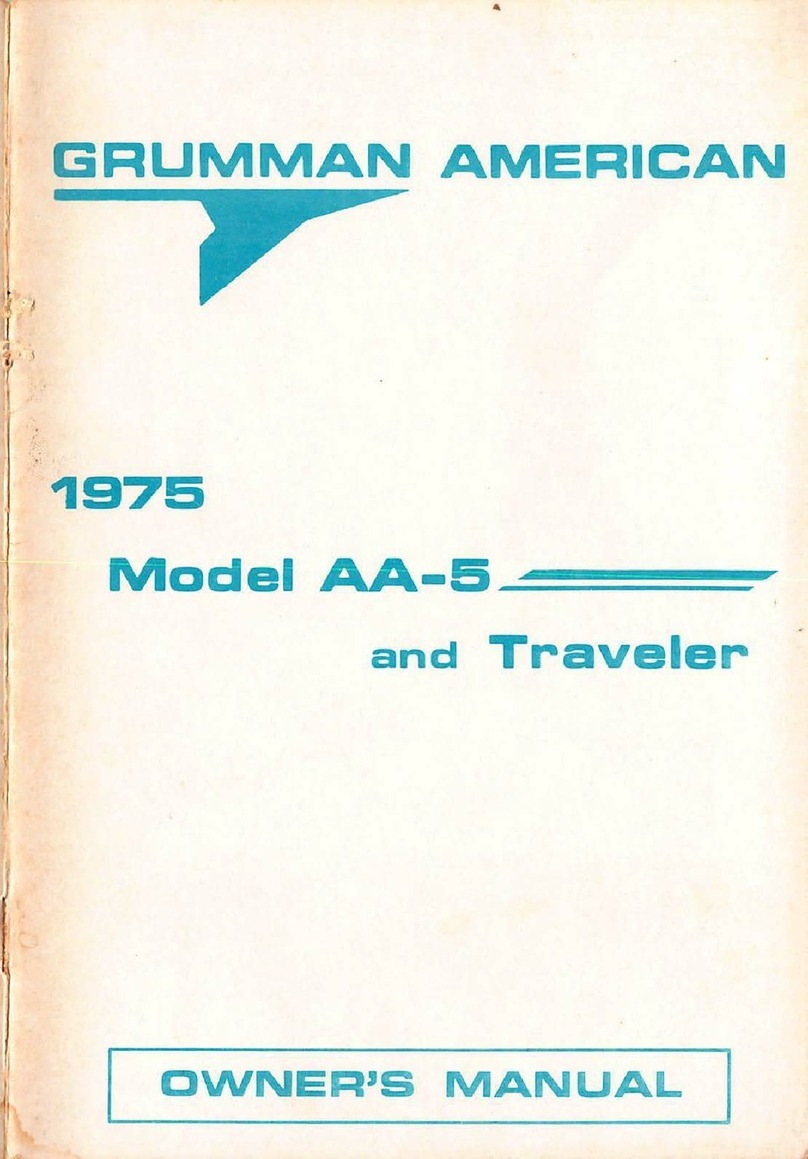SonicDad Sonic Silhouette User manual

Project #40 Page 1/25
FPG: Sonic Silhouette
Foam Plate Glider: Sonic Silhouette
Designed by:
Ritchie Kinmont
About this project:
The Foam Plate Glider Sonic Silhouette is the first in a series of flying glider projects
made from foam plates. This project is designed as a hand thrown glider, launched from
the ground, or launch from an elevated location for longer flights. Although fun for all
ages, younger children may require help hand-launching this glider.
Get some Sonic
glider time in with
this awesome
building project!
You’ll be a glider
pilot in no time!
© 2013 SonicDad Enterprises All rights reserved
Rev:03/15/13

What’s it made of?
The Sonic Silhouette is made from foam plates, a plastic drinking straw, and full-sheet
printer labels for the airframe. Metal washers provide the nose weight, and craft foam
adds a soft tip.
© 2013 SonicDad Enterprises All rights reserved
Metal washers
Foam plates
Full sheet ink
jet labels
Foam craft sheet
Project #40 Page 2/25
FPG: Sonic Silhouette
Rev:03/15/13
Drinking straws

Project Construction
Check out my way cool Sonic Dad
gauges for project difficulty,
time, and cost. Cost of this
project depends on how many
items you have on hand. If you
purchase all items new, cost will be
higher than the approximate cost
shown.
LEVEL 4 $6.00
1.0 HRS
SHOPPING LIST
Quantity Item needed Where to find it See Figure
1 pkg
10.25” diameter disposable foam plates (Home
Store brand
from Dollar Tree stores recommended SKU#16449)
Dollar Tree, Dollartree.com
online store
Page 2,
A, C
1 pkg
Avery
full sheet ink-jet printer labels #48165
Wal
-Mart, office supply store
Page 2, B, C
1 pkg
#10 size SAE flat washer
Wal
-Mart, home improvement store, hardware store
Page 2, NN
1 sheet
2mm craft foam sheet (black or
the color of your choice)
Wal
-Mart, craft store
Page 2, OO, PP, QQ
1 pkg
Regular plastic drinking straws (1/4” diameter)
Wal
-Mart, craft store
Page 2, K, L
SUPPLIES AND TOOLS NEEDED
Item needed Where to find it
Sharp scissors
Discount retail store, home improvement store
Low
temp hot glue gun
Discount retail store, home improvement store, craft store
Metal ruler or straight edge
Discount retail store, home improvement store, craft store
X
-acto knife with sharp blades
Discount retail store, home improvement store, craft store
Gule
stick
Discount retail store, craft store
½” wide clear tape
Discount retail store, craft store
(Optional) black marker
Discount retail store, home improvement store
© 2013 SonicDad Enterprises All rights reserved
Rev:03/15/13 Project #40 Page 3/25
FPG: Sonic Silhouette

Use a sharp pair of scissors to cut the rim off of
three foam plates. Be sure not to remove any of
the flat surface of the plate. For best results, cut
about half way up on the radius between the flat
surface and the rim as shown. (fig. A)
Step 1
Apply the fuselage graphics to the second foam
plate as shown. (fig. D)
Step 4
Choose which one of the three glider colors you
would like to make from pages 20 through 25.
Print the two graphic pages required on full-
sheet printer labels. Use a sharp pair of scissors
to roughly cut out the groups of graphics as
shown in figures B through E. Cut the graphics
out with about 1/4” margin around the edges.
(fig. B)
Step 2
Apply the two wingtips and camber gauge graphics
to the first foam plate as shown. (fig. C)
Step 3
© 2013 SonicDad Enterprises All rights reserved
fig. A
Remove rim
from three
plates
Fig. C
Apply these
graphics to
first plate
Fig. D
Apply these
graphics to
second plate
Fig. B
Cut around
groups of
graphics
Rev:03/15/13 Project #40 Page 4/25
FPG: Sonic Silhouette

Place the foam piece on a surface suitable for
cutting. Use an X-acto knife with a new, sharp
blade for cutting the foam pieces. You can use a
metal ruler as a cutting guide on the straight
cuts. For all of the other cuts, carefully cut
freehand along the outside on the lines as
shown. (fig. F)
Step 6
Apply the center wing section and stabilizers to
the third foam plate as shown. (fig. E)
Step 5
© 2013 SonicDad Enterprises All rights reserved
fig. F
Carefully cut on
outside of line
Cut out all
pieces shown fig. G
Cut out all of the foam pieces shown. (fig. G)
Step 7
Fig. E
Apply these
graphics to
second plate
Rev:03/15/13 Project #40 Page 5/25
FPG: Sonic Silhouette
You can use a steel
ruler for making the
straight cuts on the
graphics. Or, you can
just go free hand like
me . . . I like to live
on the edge! Just be
careful to cut on the
lines. No wandering
allowed!

Use the tail boom graphic that you printed in a
previous step. Cut the graphic out using scissors,
or an X-acto knife with a sharp blade and a
straight edge. Remove the backing and apply to a
regular plastic drinking straw measuring 1/4” in
diameter. Careful alignment is key to a great
looking tail boom. Start by sticking down the left
corner on the center and along the axis of the
straw, then carefully align the label straight along
the axis, then stick the right corner down as
shown. (fig. K)
Step 11
Stick the fuselage halves together, lining up all the
edges flush. Lay the fuselage on a flat surface to
make sure it is straight with no warping. Allow the
glue to dry for a few minutes before proceeding.
(fig. J)
Step 10
© 2013 SonicDad Enterprises All rights reserved
Lay both fuselage pieces on your work surface
with the foam side up as shown. Use a glue stick
to apply a thin, even film of glue over the entire
surface of both pieces. For good adhesion, be
sure the entire surface is covered. (fig. I)
Step 9
Use an X-acto knife to cut the four tail boom
mounting slots as show. Be careful to cut exactly
on the lines. (fig. H)
Step 8
Apply a thin coat of
glue on both pieces fig. I
fig. H
Cut on the four tail
boom slot lines
Rev:03/15/13 Project #40 Page 6/25
FPG: Sonic Silhouette
Be sure fuselage is
straight with no
warping
fig. J
fig. K
Align graphic straight
along straw’s axis

Using a low-temp hot glue gun, apply a thin bead
of glue on the bottom edge of the stabilizer in
the location shown. (fig. O)
Step 15
Press the first edge of the label down on the
straw by carefully sliding your thumb back and
forth. Now, apply the label all the way around
the straw by slowly turning the straw with one
hand while sliding your thumb and fingers back
and forth all the way across the label with your
other hand. Rotate and apply until the label is
applied all the way around the straw. Be sure the
seam on the label is pressed down firmly all the
way along. (fig. L)
Step 12
© 2013 SonicDad Enterprises All rights reserved
Use a sharp pair of scissors to trim off the
extra straw on each side of the graphic. Use the
cut lines on each end as a guide. Carefully cut
out the stabilizer slot on the cut lines as shown.
(fig. M)
Step 13
Use a sharp pair of scissors to carefully cut out
the stabilizer graphic Peal the backing and
carefully apply the graphic to the foam side of
the stabilizer as shown. For best results, align
one corner first, then the bottom edge, then the
whole graphic. (fig. N)
Step 14
fig. O
Apply thin bead of
glue here
Rev:03/15/13 Project #40 Page 7/25
FPG: Sonic Silhouette
Rotate straw as you
slide your fingers to
apply label
fig. L
fig. M
Cutout stabilizer
slot
Trim extra straw at
each end on cut line
fig. N
Align corner
first, then
bottom edge
Apply
graphic to
stabilizer

Working quickly while the glue is still hot, insert
the stabilizer into the slot and against the inside
bottom of the straw as shown. Quickly align the
stabilizer so it is flat against the bottom, and
centered inside the straw. (fig. P)
Step 16
© 2013 SonicDad Enterprises All rights reserved
Apply a piece of clear tape on one side on the
stabilizer, about 1/2” up from the boom as
shown. Wrap the tape down around the boom and
onto the other side of the stabilizer. Trim the
length of the tape on the other side before
applying. (fig. Q)
Step 17
Use the Stabilizer Centerline Template to mark
a centerline on the foam side of the horizontal
stabilizer as shown. Make your mark from the
leading edge back to about where the elevator
begins. If you mark all the way across, the end
of the line will show after you attach the
stabilizer. (fig. R)
Step 18
fig. S
Carefully crease
foam for elevator
Use a steel ruler to make a crease in the
horizontal stabilizer, creating a movable
elevator. Align the ruler on the elevator line as
shown. Carefully apply pressure to the foam on
the back side of the ruler to create a crease in
the foam. Be careful not to crack the foam when
making the crease. (fig. S)
Step 19
fig. P
Insert stabilizer
flat on the bottom
and centered inside
the straw
Rev:03/15/13 Project #40 Page 8/25
FPG: Sonic Silhouette
fig. Q
Apply tape from
one side around
the bottom to the
other side
fig. R
Use template to mark
centerline here

Working quickly while the glue is still hot, attach
the horizontal stabilizer to the vertical
stabilizer as shown. Use the centerline marking
on the bottom to align the horizontal stabilizer
in the center. Be sure the stabilizers are lined
up flush at the leading edges. Also be sure the
horizontal stabilizer is aligned 900to the
vertical as shown. Hold the stabilizer in position
until the glue cools. (fig. U)
Step 21
Using a low-temp hot glue gun, apply a thin bead
of glue on the top edge of the stabilizer in the
location shown. (fig. T)
Step 20
Installing the tail boom will
take a little patience and
finesse. I designed the fit
to be tight so the joint is
secure. Just take your time
and carefully work the tail
boom into the slots about
half way like this. Installing
the boom with the tail
rotated like this makes it
easier to get it started in
the slots. We will rotate the
tail in the next step. Be
gentile; remember the
empennage is your friend!
© 2013 SonicDad Enterprises All rights reserved
Carefully insert the tail boom into the slots in
the fuselage with the tail rotated 900in the
orientation shown. The fit between the tail boom
and fuselage is designed to be snug, so care
must be taken during instillation to avoid
damaging the foam. (fig. V)
Step 22
fig. V
Inset tail boom
half way into
slots with tail
oriented at 900
Rev:03/15/13 Project #40 Page 9/25
FPG: Sonic Silhouette
fig. T
Apply thin bead of
glue here
fig. U
Attach on
centerline
marking
Align at
900

Taper the edges of the wing pieces about 1/2”
back as shown. It’s helpful to practice on a spare
piece of foam. (fig. Z)
Step 26
Now rotate the tail upright and carefully push it
all the way to the end of the slots as shown.
This is a snug fit and will require some care to
prevent damage as you install the tail. Check the
alignment of the tail; be sure the vertical
stabilizer is straight up and down. Carefully
rotate the tail boom to make small adjustments
as necessary. (fig. W)
Step 23
© 2013 SonicDad Enterprises All rights reserved
Apply a piece of clear tape on one side of the
fuselage and over the tail boom as shown. Wrap
the tape down around the bottom and onto the
other side of the fuselage. Trim the length of
the tape even with the top of the fuselage on
the other side. (fig. X)
Step 24
To improve the efficiency of the wing, use the
handle of your X-acto knife to carefully taper
the foam side of the leading and trailing edges
of all thee wing pieces. It’s helpful to place the
foam wing pieces near the edge of a raised
surface as shown. (fig. Y)
Step 25
fig. Y
Taper both
edges
Apply tape
from one side
around the
bottom to the
other side
fig. X
fig. W
Carefully
install tail
boom all the
way on with
the tail
upright
Rev:03/15/13 Project #40 Page 10/25
FPG: Sonic Silhouette
fig. Z
Taper each edge
back about 1/2”

Apply a bead of low-temp hot glue in the location
shown. (fig. DD)
Step 30
Use a metal ruler to crease the foam on the
leading edge of each wing piece. Align the ruler
with the leading edge line as shown. (fig. AA)
Step 27
© 2013 SonicDad Enterprises All rights reserved
Hold the wing piece vertically on a flat surface
and gently bend the leading edge over as shown.
Carefully fold the leading edge down on all three
wing pieces. (fig. BB)
Step 28
Use the camber gauge to check the camber in all
three wing pieces. Adjust the camber to match
the gauge if necessary. (fig. CC)
Step 29
Check wing camber with
camber gauge
fig. CC
fig. DD
Apply glue here
Rev:03/15/13 Project #40 Page 11/25
FPG: Sonic Silhouette
fig. AA
Crease
foam on
leading
edge line
Carefully bend the leading
edge on flat surface fig. BB

Apply a piece of clear tape to the wing in the
location shown. Trim the end of the tape so that
it extends past the wing about 3/4”. (fig. HH)
Step 34
Working quickly while the glue is still hot, attach
the center wing section to the fuselage as
shown. Be sure the wing is tight against the
fuselage and all the way forward against the
step as shown. (fig. EE)
Step 31
© 2013 SonicDad Enterprises All rights reserved
While the glue is still hot, check the position of
the wing looking down on it as shown. The small
alignment marks on the wing should be aligned in
the center on the fuselage as shown. (fig. FF)
Step 32
Before the glue cools, check the wing alignment
from the front. Be sure the wing is aligned 900
from the fuselage as shown. (fig. GG)
Step 33
fig. Y
fig. GG
Wing should be
aligned 900to
fuselage
fig. HH
Apply tape in
this location
fig. FF
Align wing marks
with center of
fuselage
fig. EE
Attach wing
tightly on
fuselage
Rev:03/15/13 Project #40 Page 12/25
FPG: Sonic Silhouette

While holding the leading edge joint together
tightly, apply a piece of tape in the location
shown. Be sure the joint is tight before applying
the tape. A tight fit is important because the
leading edge joint will establish the dihedral
angle in the wingtip. Trim the length of the tape
leaving about 3/4” and wrap tightly under the
wing. (fig. KK)
Step 37
Holding the tape back with your thumb, carefully
align the wingtip piece as shown. After you are
sure the two pieces are aligned with each other,
hold the wingtip piece tightly against the center
section with the wingtip elevated as shown, and
apply the tape. (fig. II)
Step 35
© 2013 SonicDad Enterprises All rights reserved
Now pull the wingtip down into position and wrap
the loose end of the tape tightly around the
trailing edge and under the wing as shown.
(fig. JJ)
Step 36
fig. Y
fig. JJ
Wrap tape around trailing
edge and under wing
Attaching each wingtip
piece is a bit tricky, but
I know you can do it!
Just be sure you have
the two pieces aligned
well. I like to stick the
tape on with the wingtip
elevated like this. This
will help the tape joint
to be a little tighter
when you pull the wingtip
down into position. Take
your time and you’ll get
it. If you don’t get it
right the first time, you
can carefully remove the
tape and try again.
fig. II
Attach wing to
fuselage
Rev:03/15/13 Project #40 Page 13/25
FPG: Sonic Silhouette
Apply tape to leading
edge and under wing
fig. KK
Hold joint together
tightly while applying tape

Remove the backing and apply the shock and
nose pad cutting template to a piece of black
adhesive-backed craft foam. Apply the graphic
on the back side of the foam piece as shown.
Use a sharp pair of scissors to cut out both
pieces. (fig. OO)
Step 41
The dihedral angle in each side of the wing
should match. If they don’t look even, small
adjustments can be made by carefully bending
the wingtip up or down slightly. (fig. LL)
Step 38
© 2013 SonicDad Enterprises All rights reserved
Apply a small bead of low-temp hot glue between
the washer location markings on one side of the
fuselage as shown. (fig. MM)
Step 39
Working quickly while the glue is still hot, attach
a #10 flat washer on the location marking. Attach
the second washer to the other side of the
fuselage as shown. (fig. NN)
Step 40
fig. Y
fig. OO
Apply graphic
and cut out
craft foam
pieces
Apply glue
between washer
location markings
fig. MM
The dihedral
angle in each
wing should
match
fig. LL
Rev:03/15/13 Project #40 Page 14/25
FPG: Sonic Silhouette
fig. NN
Attach
washers to
both sides

Remove the backing on the shock pad foam
piece. Apply the shock pad to the nose of the
fuselage as shown. (fig. PP)
Step 42
© 2013 SonicDad Enterprises All rights reserved
Peal the backing and apply the nose pad to one
side of the fuselage as shown. Use the location
lines as a guide. Wrap the pad around the nose;
then apply to the other side using the markings
for location. (fig. QQ)
Step 43
If you wish, you can use a permanent black marker
to color the foam on the canopy as shown. (fig. RR)
Step 44
fig. PP
Apply foam shock
pad
Use location lines to apply
pad around nose
fig. QQ
Color foam above
canopy black fig. RR
Rev:03/15/13 Project #40 Page 15/25
FPG: Sonic Silhouette

Adjusting Your Sonic Silhouette
The primary adjustment for a great
flying glider is the elevator. I will help
you find the best position for the
elevator in the next section. To
increase the elevator angle carefully
bend it up like this. If you need to
decrease the elevator angle, just
carefully bend it down in the same way.
Rigging the wings of your glider is also very important for good
flights. You should check to be sure you have the same camber
throughout the wing and matching camber between each wing. Also
check to be sure there is no twist in each wing. The best way to do
that is to look at your glider nose-on, then tilt it up just enough to
see the under side of the wings like this. Now, compare the amount
of visible wing at the tips; they should be the same. If you see
more or less surface on one side, then carefully warp the wingtip
until they match.
© 2013 SonicDad Enterprises All rights reserved
Rev:03/15/13 Project #40 Page 16/25
FPG: Sonic Silhouette
Equal on both
wingtips

Flying Your Sonic Silhouette
A good launch is key to a good flight.
I’ll show you how to launch your glider
first, then we’ll look at trimming the
elevator for a nice glide. Grip your
Sonic Silhouette on the fuselage like
this. Start your hand launch with your
arm back and the plane level.
Now give your glider a nice smooth toss,
keeping the wings and nose level as you
release. You don’t want to release the glider
with the wings in a bank, or the nose raised
or lowered. A nice level release is what you
want to practice. You will also want to
practice adjusting the speed of your throw.
Too slow and your glider wont have enough
airspeed to fly. Too fast and your release
will be hard to control. Just a nice moderate
speed is all you need.
© 2013 SonicDad Enterprises All rights reserved
Hand Launching
Rev:03/15/13 Project #40 Page 17/25
FPG: Sonic Silhouette

Ahh . . . Just right! When you have
your throwing skills perfected, and
the correct elevator setting, a
moderate toss will give you a nice
gentle glide. You should be able to
glide 10 or 20 feet - even longer if
you throw from a higher elevation.
If you have too much elevator as
shown in this example, your glider will
climb, then stall and dive to the
ground like this. If your glider stalls,
reduce the elevator angle just a bit
and try again.
Now that you know how to launch,
lets look at trimming your
elevator for gliding. This first
example shows what happens if
you have too little elevator angle.
If your glider dives like this with
moderate speed, add a little
elevator by carefully bending it up
a little bit and try again.
© 2013 SonicDad Enterprises All rights reserved
Rev:03/15/13 Project #40 Page 18/25
FPG: Sonic Silhouette

Once you get the hang of hand-launching your glider, try improving your
piloting skills with some cool tricks.
Glider Catch: You can really hone your piloting skills by playing catch with
another person. Start about 10’ apart, then keep moving apart as your skills
improve. Try throwing the glider a bit harder for more distance. If you throw
a little nose down and with a little extra speed, the glider will fly farther and
rise back up to the person catching it.
© 2013 SonicDad Enterprises All rights reserved
Try this!
Notice to Airmen: The
Sonic Silhouette glider is
best used at moderate
ambient temperatures. If
the glider is built at room
temperature then taken to
extreme hot or cold
environments, the wings
will warp slightly because
the paper label and foam
expand and contract at
different rates with
temperature changes. The
warping can be worked out
of the wings and horizontal
stabilizer with your
fingers if you wish to
remain at the new temp.
Distance: You can have a gliding contest to see who can throw the glider the
farthest. Long flights require a balance between a good throw and the right
elevator setting. Experiment with your glider. Try throwing it at different
speeds and with different elevator settings. You can get even longer flights
if you stand on an elevated place like a hill or a tree house. Push the edge of
the envelope!
Rev:03/15/13 Project #40 Page 19/25
FPG: Sonic Silhouette

© 2013 SonicDad Enterprises All rights reserved
Rev:12/12/11
Project #40 Page 20/25
FPG: Sonic Silhouette
Rev:03/20/13
SS9
Sonic Silhouette Graphics
Blue/Grey
(print on full sheet label)
Table of contents
Popular Aircraft manuals by other brands

AEROPRAKT
AEROPRAKT A32-214-POH Pilot operating handbook

Cessna
Cessna 172S Nav III Pilot operating handbook

Technify Motors
Technify Motors Cessna 172 Maintenance manual
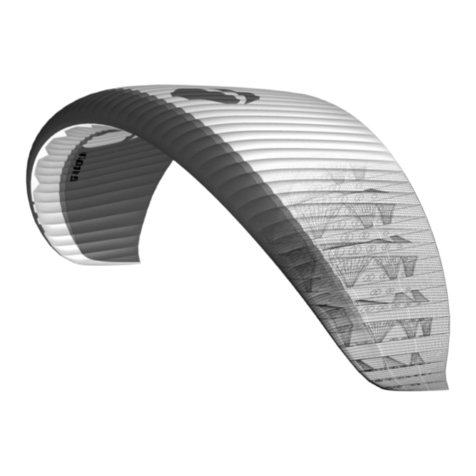
Gradient
Gradient Montana 3 user manual
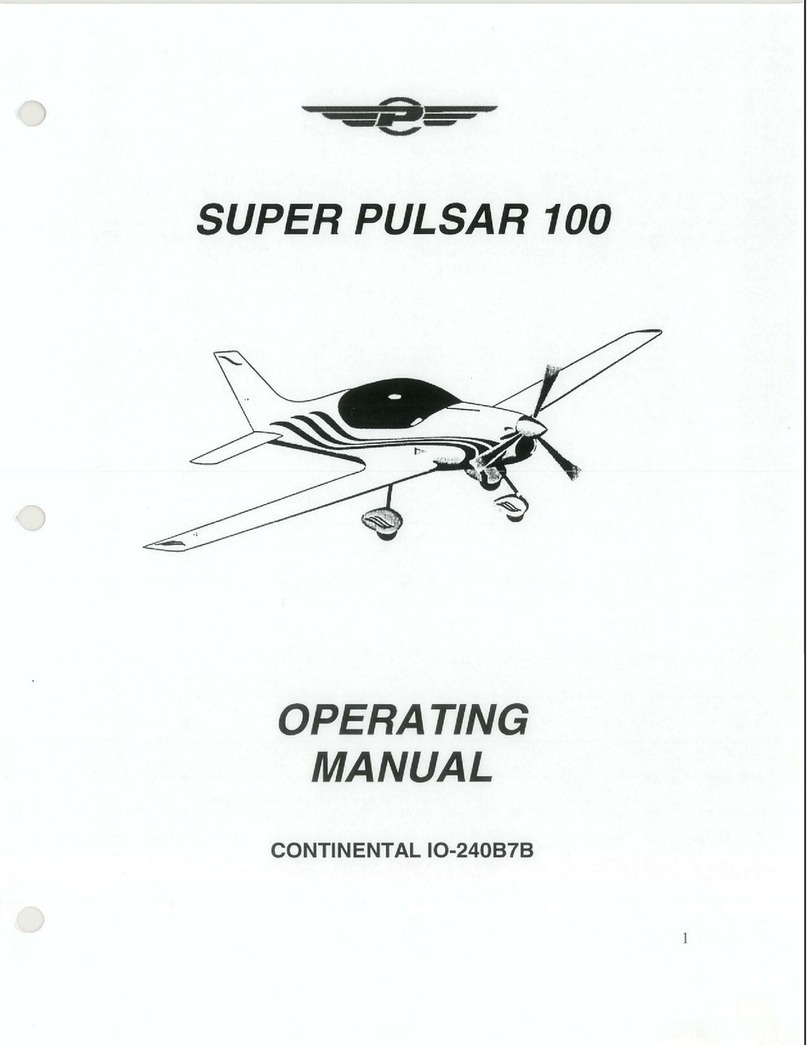
Pulsar Aircraft Corporation
Pulsar Aircraft Corporation Super Pulsar 100 operating manual
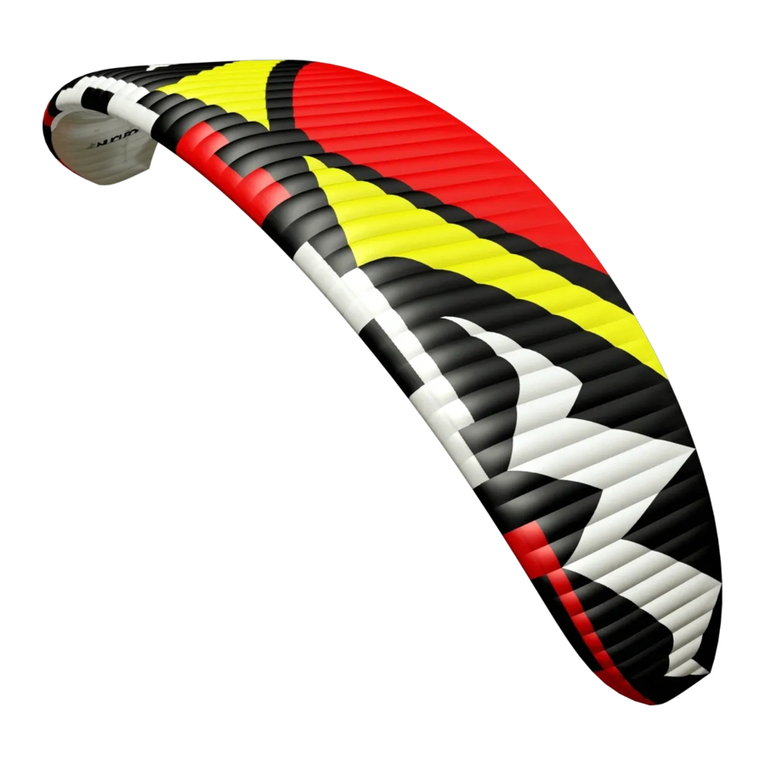
Dudek
Dudek Nucleon WRC user manual
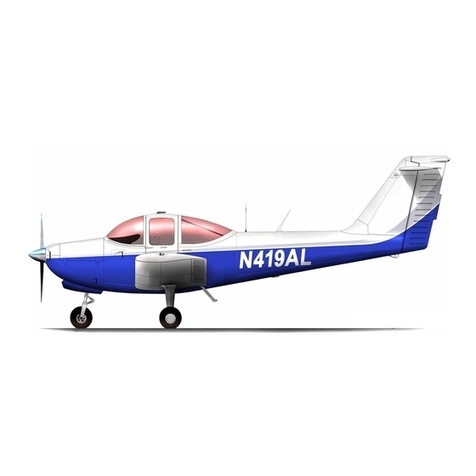
Piper
Piper TOMAHAWK Pilot's operating handbook and faa approved airplane flight manual
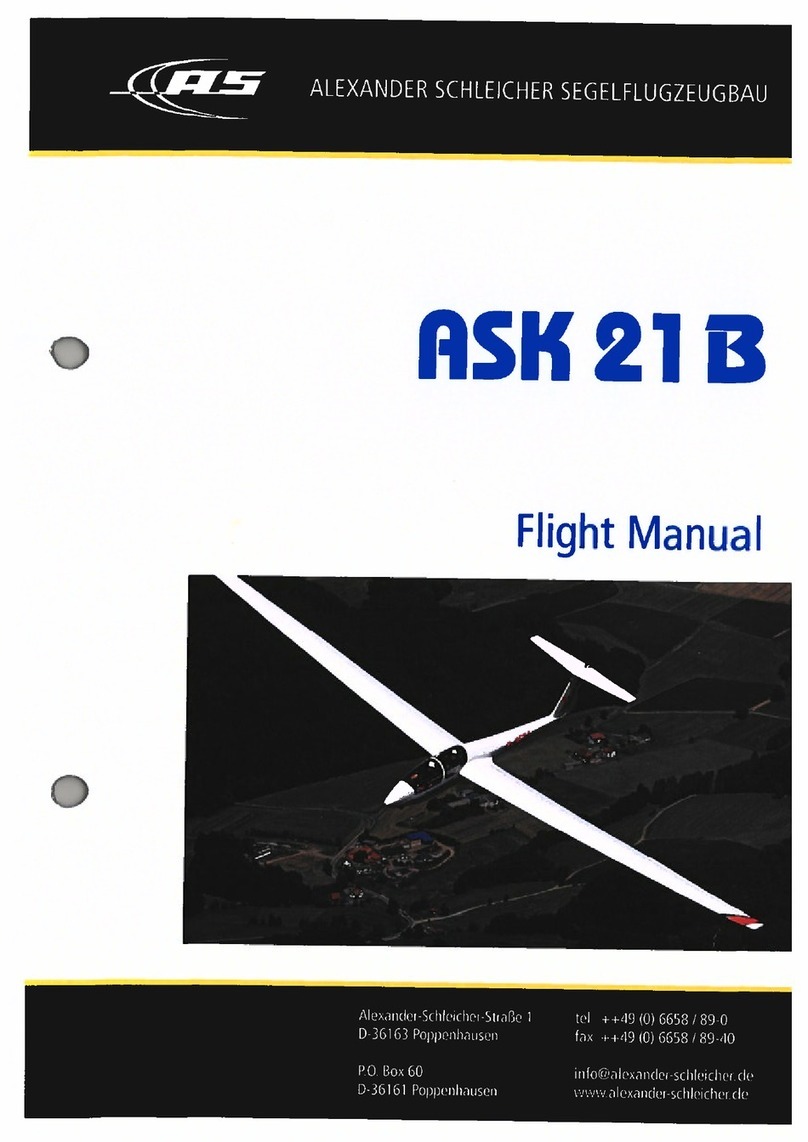
Alexander Schleicher
Alexander Schleicher ASK 21 B Flight manual
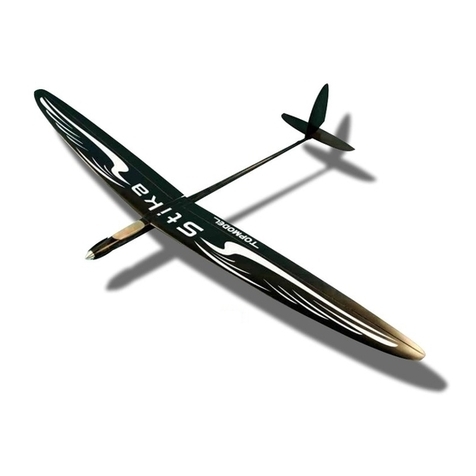
Topmodel
Topmodel Stika F5K PnF manual
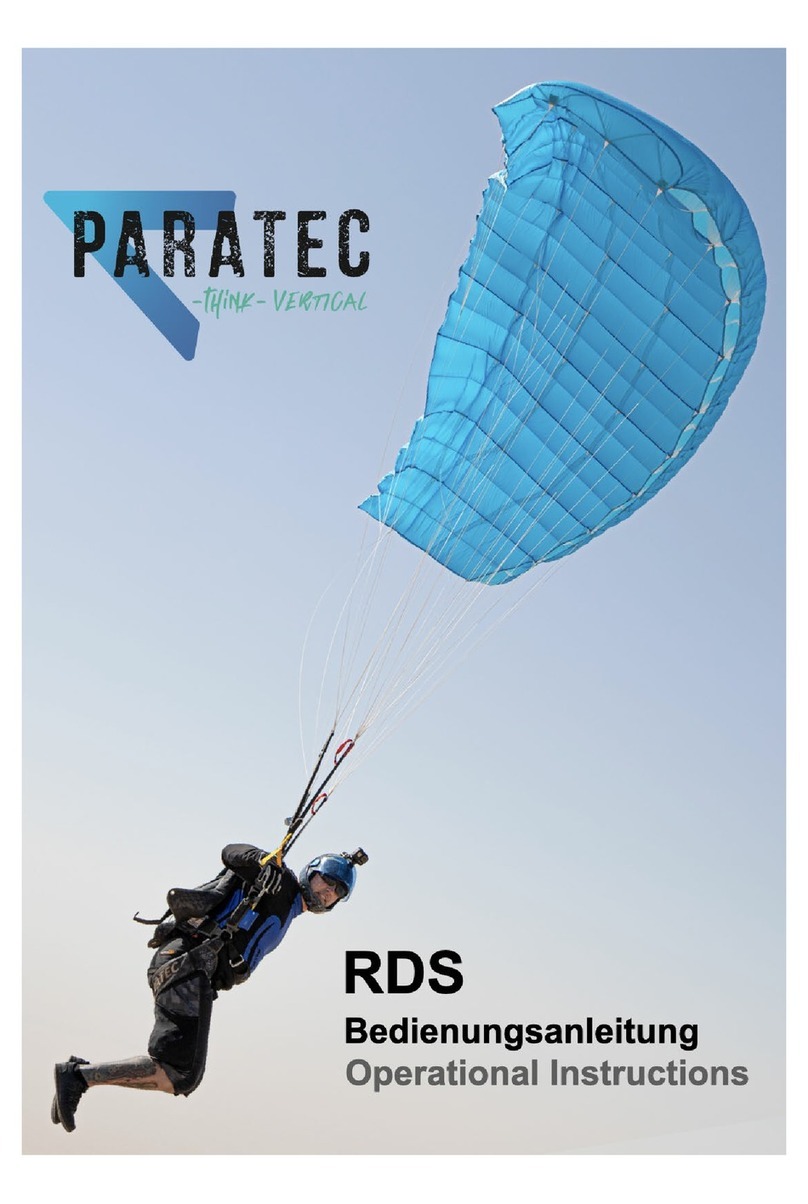
Paratec
Paratec RDS Operational instructions
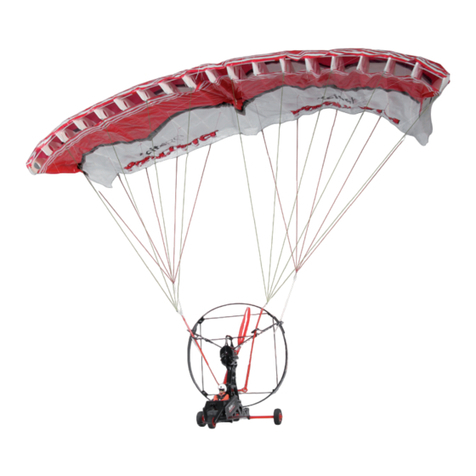
XciteRC
XciteRC PARACOPTER RTF manual

Cirrus
Cirrus SR22 Maintenance manual

